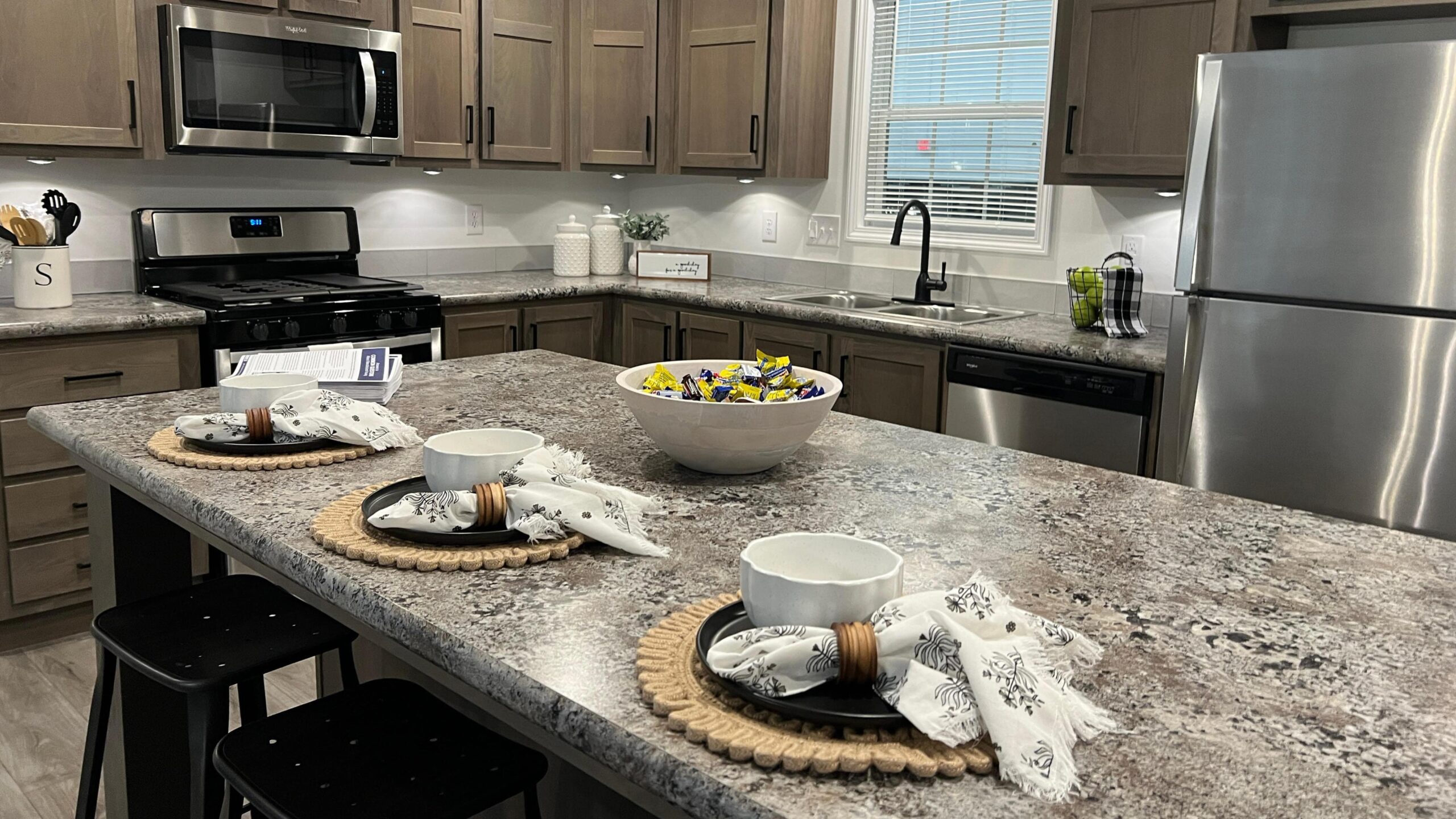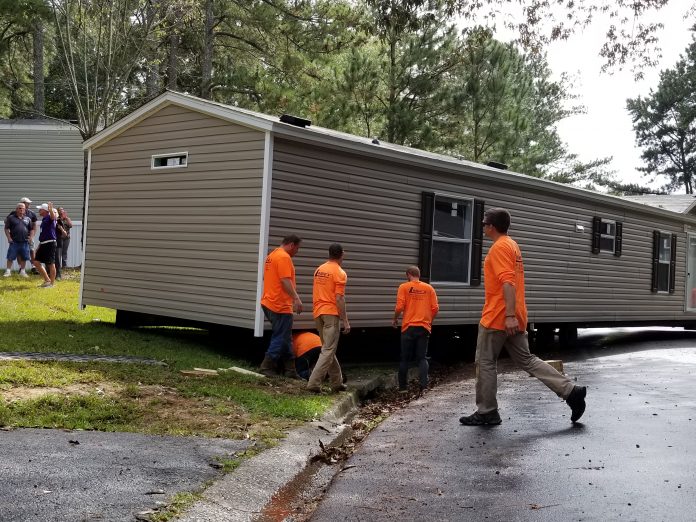
Live Walkthrough of a Manufactured Home Installation Demonstration at SECO 2018
Twenty people recently gathered to watch a live demonstration of a manufactured home installation at a community near Atlanta. MHVillager came along to document the process for people who want to better understand what’s done to ensure the health, safety and functionality of a manufactured home.
The demonstration was put on by Cole Phillips, owner of Phillips Manufactured Home Services and co-organizer of SECO, an annual symposium for owners and managers of small- to midsize-communities and other industry professionals.
“There’s a lot that goes into finishing a vacant site,” Phillips said, as the 16×80-foot home from ScotBilt rolled up an incline at The Waverly, a hilly and picturesque community with old-growth trees.
“Your park probably is not designed for a 16×80 home,” Phillips said. “I’m not saying it won’t go in, but you need to plan for it.”
Most communities were built 30 years ago or more, and designed for homes that were smaller, easier to move and easier to install.
Included in the installation process is…
- Clearing any trees that may block the home’s entry and placement
- Grading for drainage
- Clearance on all sides, for delivery and general ease-of-use
Phillips said due diligence is required in every delivery and set up, because no locale is the same.
“You might need to get into the books or make a call to find out everything you need. If you have a plumber coming out, you might need to pull a permit for that person to be there,” he said. “Have you ever had to pull a permit for a plumber? Some places require it, and if you find that out when you arrive, it will cost you time and money.”
Utility Hookup for Manufactured Home Installation
“You have to make sure all of the utilities are set upon delivery,” Phillips said. “If not, your
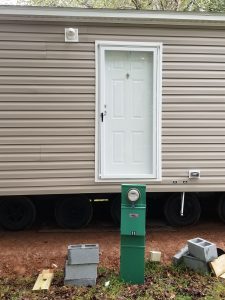
bill is going up. That’s something you want to have settled well ahead of time.
“We’re here to save you money, to do this part of the job as quickly and as inexpensively as possible,” he said.
In nearly every case with a manufactured home installation, there will be an educated guess on where the main entry door will be positioned on the home site. Part of the consideration is an attempt to get the site’s power pedestal in a convenient place. In this case, the power pedestal clearly will need to be relocated.
Vapor Barrier Installation
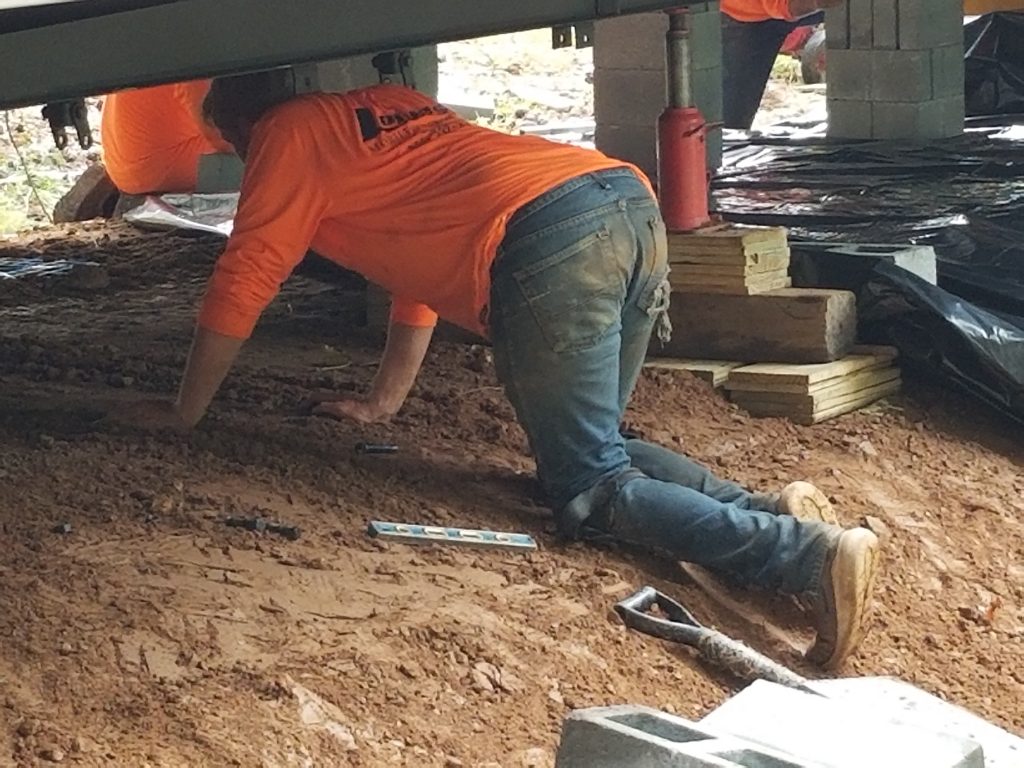
A vapor barrier is rolled out as the home is placed and temporary piers are set. The vapor barrier keeps moisture from coming up into the home.
The Waverly was built in the 1970s. It is a sprawling community in the Chattahoochee River basin northwest of downtown Atlanta. It includes 270 homesites, with 40 manufactured homes for rent. The property is a Yes! Community, one of the nation’s largest portfolio owners of manufactured home communities.
Leveling Pier Sites, Strapping Down the Home
Among the most important parts of manufactured home installation is to place the home on sturdy piers and strap it down. This ensures the health and safety of the residents, as well as the functionality and longevity of the home.
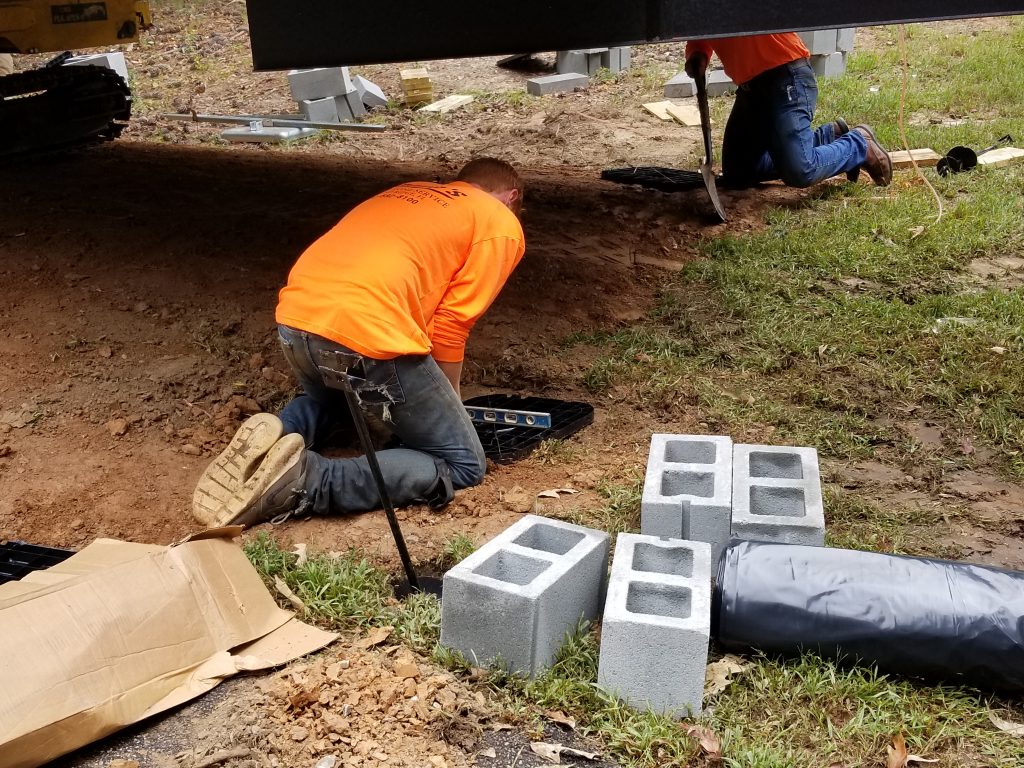
“This is amazing. It’s so important that everyone sees how a home comes in and what should be done to make it stable and safe.”
— The Waverly’s Community Manager Debbie Houston
Wheel and Axle Removal After Manufactured Home Installation
When the home has been positioned and made level with the use of a hand operated Platypus lift, crews get to work pulling off the tires and axles that enable the home to be rolled into place. Many times, the gear will be stored under the home for future use. However, sometimes the parts are recycled for use with another delivery and home installation.
Finishing the Home
Installers will finish the utilities before making way for skirting and deck space.
“We’ll have decks put on it and will have it listed by the end of the week and ready to go,” said Shana Johnson, sales agent for The Waverly.






